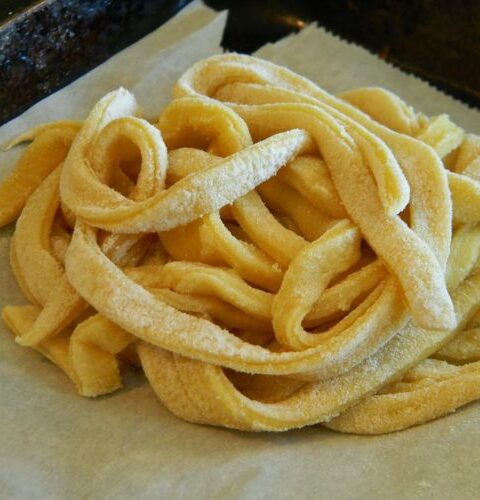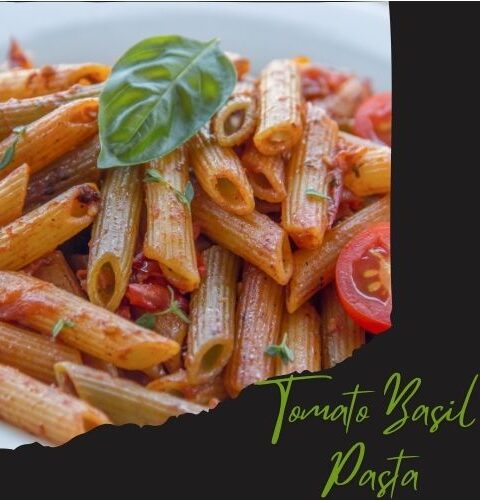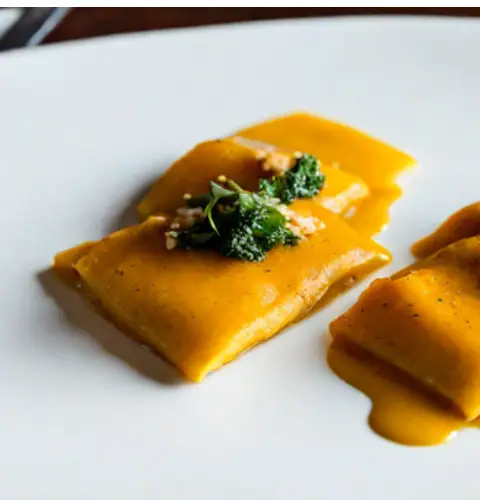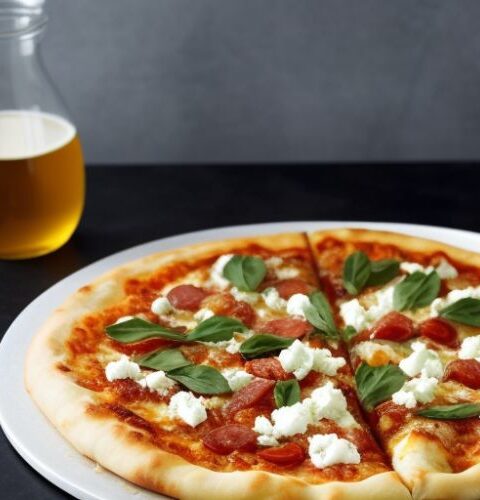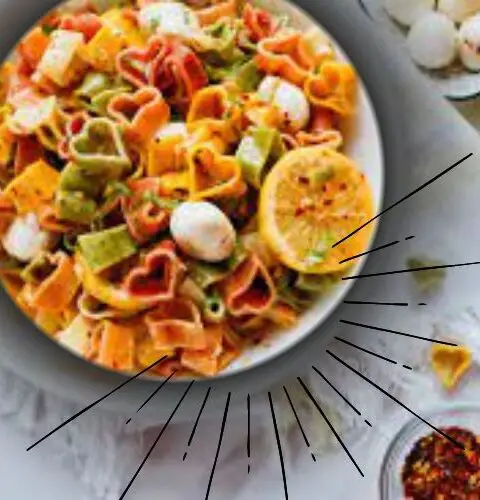A Culinary Delight: Broccoli Parmesan Pasta
Broccoli Parmesan Pasta is a delicious and easy dish that can be made with a few simple ingredients. There are many variations of this recipe, but the basic steps are:
- Cook some Broccoli Parmesan Pasta of your choice in salted, boiling water until al dente, then drain and reserve some of the cooking water.
- In a large skillet, heat some olive oil and sauté some garlic and red pepper flakes for a few minutes, then add some chopped broccoli and cook until tender, adding some pasta water or lemon juice if needed.
- Stir in some grated Parmesan cheese, butter, salt, pepper, and lemon zest, and toss with the pasta until well combined.
- Sprinkle some fresh parsley on top, and enjoy!
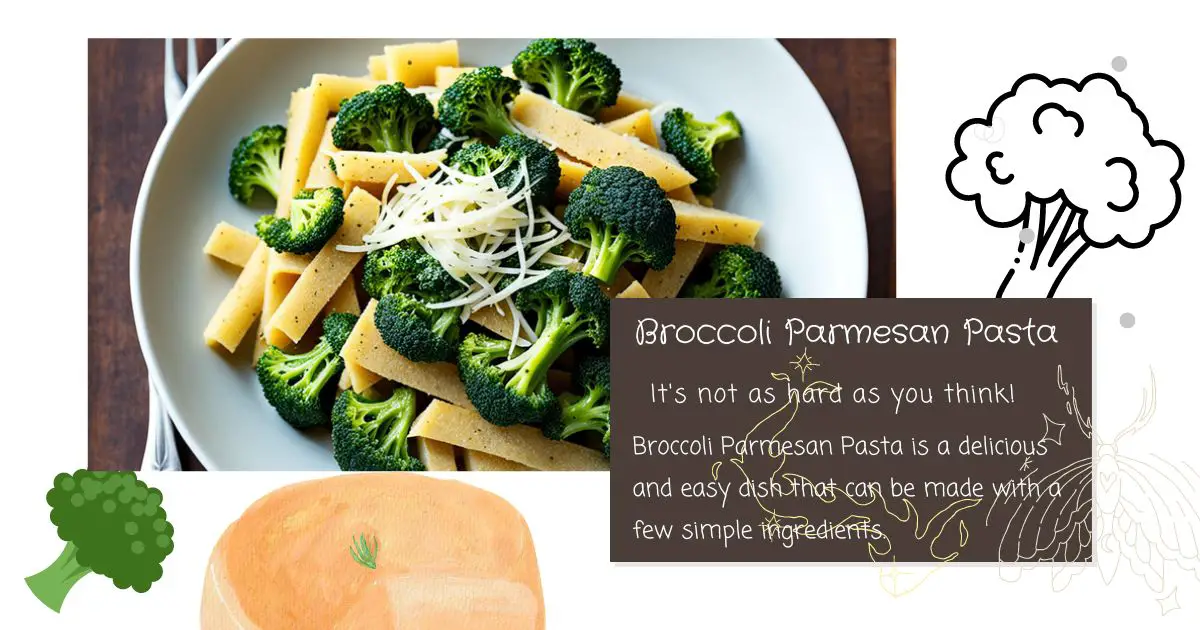
If you want to try some different versions of Broccoli Parmesan Pasta, you can check out these recipes:
- One Pot Creamy Parmesan Broccoli Pasta: This recipe uses skim milk and vegetable broth to make a creamy sauce and high-fiber pasta for extra nutrition.
- 20 Minute Parmesan Pasta with Broccoli: This recipe uses heavy cream and oregano for a rich and flavorful sauce and spiral pasta for a fun shape.
- One-Pot Lemon-Broccoli Pasta with Parmesan: This recipe uses chicken or vegetable broth and lemon juice for a light and tangy sauce and farfalle or whole-wheat rotini for a hearty texture.
Broccoli Parmesan Pasta Nutritional BenefitsPerfect 10 Whole Wheat Pasta Bliss Unveiled
Broccoli:
- Vitamin C: Broccoli is a rich source of vitamin C, an antioxidant that supports the immune system, promotes skin health and aids in collagen production.
- Vitamin K: This cruciferous vegetable is high in vitamin K, which is essential for blood clotting and bone health.
- Folate: Broccoli contributes folate, a B-vitamin important for DNA synthesis, repair, and cell division.
- Fiber: With significant fiber content, broccoli promotes digestive health, helps maintain feelings of fullness, and supports weight management.
Parmesan Cheese:
- Calcium: Parmesan is a powerhouse of calcium, which is crucial for bone and tooth health, muscle function and nerve signaling.
- Protein: The high-quality protein in Parmesan contributes to muscle maintenance and repair, aiding in overall body strength.
- Phosphorus: This cheese provides phosphorus, which is important for bone health and energy metabolism.
Pasta:
- Complex carbohydrates: Pasta, especially whole grain varieties, provides complex carbohydrates for sustained energy release, physical endurance, and mental focus.
- B vitamins: Pasta contains a variety of B vitamins, including B vitamins such as thiamine, riboflavin, and niacin, which play a role in energy metabolism.
- Iron and magnesium: These minerals in pasta contribute to blood health, oxygen transport and muscle function.
Olive Oil:
- Healthy fats: Olive oil, a staple in the dish, provides heart-healthy monounsaturated fats, which reduce the risk of cardiovascular diseases.
- Antioxidants: Rich in antioxidants, olive oil helps fight oxidative stress by reducing inflammation and promoting overall well-being.
Garlic:
- Allicin: Garlic contains allicin, a compound with anti-inflammatory and immune-boosting properties.
- Antioxidants: Garlic is rich in antioxidants that protect cells from damage and support overall health.
Red pepper flakes (optional):
- Capsaicin: Red pepper flakes, if added, contribute capsaicin, known for its metabolism-boosting properties and ability to aid in weight management.
Lemon (optional):
- Vitamin C: A lemon wedge, if served, provides an extra dose of vitamin C, which enhances the immune-boosting properties of the dish.
Now, let’s delve into the step-by-step process of making this culinary masterpiece in your own kitchen.
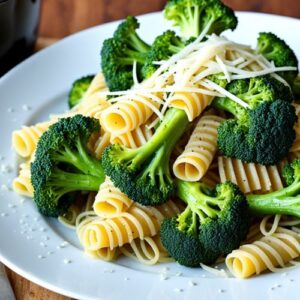
Broccoli Parmesan Pasta
Equipment
- Large pot for boiling pasta
- Skillet for sauteing
- Cutting board and knife
- Grater for Parmesan cheese
- Lemon squeezer (if using lemon)
Ingredients
- 8 oz about 225g pasta
- 2 cups broccoli florets
- 2 tablespoons olive oil
- 3 cloves garlic minced
- ¼ teaspoon red pepper flakes optional
- Salt and pepper to taste
- ½ cup grated Parmesan cheese
- ¼ cup chopped fresh parsley optional
- Lemon wedges optional, for serving
Notes
- Customize the dish by adding grilled chicken or shrimp for extra protein.
- Whole-grain pasta can be used for added fiber and nutritional benefits.
- Adjust spice levels by controlling the amount of red pepper flakes.
- Leftovers can be refrigerated and reheated for a delicious next-day meal.
Hi, this is Copilot. I can help you find some recipes for broccoli parmesan pasta. Here are some options:
- One Pot Creamy Parmesan Broccoli Pasta: This recipe is made in just one pot in just 20 minutes. It uses high-fiber pasta, vegetable broth, skim milk, broccoli florets, and parmesan cheese. It is a meal the whole family will love1
- One-Pot Lemon-Broccoli Pasta with Parmesan: This recipe is ideal for busy weeknights, with bright and fresh flavor. It uses farfalle pasta, chicken or vegetable broth, lemon zest and juice, broccoli florets, and parmesan cheese. It is hearty and healthy3.
I hope you enjoy these recipes. Let me know if you need any more help.😊
Conclusion
Pasta with Broccoli and Parmesan stands out as a tribute to the tasteful union of refinement and simplicity. This recipe has demonstrated itself to be exemplary, having advanced from its humble Italian starting points to the numerous foods it has been adjusted to. Savor not only the flavors but also the tradition and innovation that combine in every delicious mouthful as you start your culinary adventure with this recipe.
FAQ
1. What is broccoli pasta made of?
- Broccoli pasta, as a rule, consists of a combination of pasta, broccoli, and different fixings to improve the flavor. Pasta is the essential fixing, as a rule picked in light of individual inclination—normal decisions incorporate spaghetti, fettuccine, or penne. Broccoli, a cruciferous vegetable, is a key fixing, giving it a dynamic green tone and an abundance of supplements. Extra fixings might incorporate olive oil, garlic, parmesan cheddar, and now and then red pepper pieces for a sprinkle of zest. The dish is frequently prepared with salt and pepper to taste.
2. What is parmesan in pasta?
- Parmesan in pasta alludes to Parmesan cheddar, a hard, granular cheddar that began in Italy. Parmesan, or Parmigiano-Reggiano, is produced using cow’s milk and is known for its rich and appetizing flavor. In pasta dishes like Broccoli Parmesan Pasta, ground Parmesan is frequently added to make a smooth and delightful sauce. The cheddar liquefies when joined with hot pasta, covering the dish with its particular taste and adding a hint of umami.
3. Why is broccoli pasta good for you?
Broccoli pasta is considered a nutritious and wholesome dish for several reasons:
- Rich in Nutrients: Broccoli is a nutrient-dense vegetable, providing essential vitamins (C and K), minerals (folate), and fiber.
- Balanced Macronutrients: The combination of pasta, broccoli, and Parmesan cheese offers a balanced mix of carbohydrates, proteins, and fats.
- Heart-Healthy Ingredients: Olive oil, commonly used in broccoli pasta, contains monounsaturated fats, which are beneficial for heart health.
- Versatility: The dish is versatile and can be customized to suit various dietary preferences by incorporating whole-grain pasta or adding protein sources like chicken or shrimp.
4. What is Parmesan mostly used for?
Some common uses of parmesan include:
- Grating: Parmesan is often grated and sprinkled over pasta dishes, salads, soups, and risottos to enhance flavor.
- Sauce and Spread: It can be melted into sauces, adding a creamy and savory element.
- Snacking: Parmesan can be enjoyed on its own or paired with fruits, nuts, or crackers as a flavorful snack.
- Grilled or Baked Dishes: Parmesan can be used in baked or grilled dishes, providing a golden-brown crust and a burst of umami flavor.
5. Is Parmesan vegetarian? Why?
- Yes, Parmesan is vegetarian. Traditional Parmesan cheese is made from cow’s milk, rennet (an enzyme), and salt. While some cheeses use animal rennet as a coagulating agent, many Parmesan producers have adopted microbial or vegetarian rennet. As a result, most Parmesan available on the market is vegetarian-friendly. It’s always advisable to check the label or product information to ensure that it aligns with specific dietary preferences.


